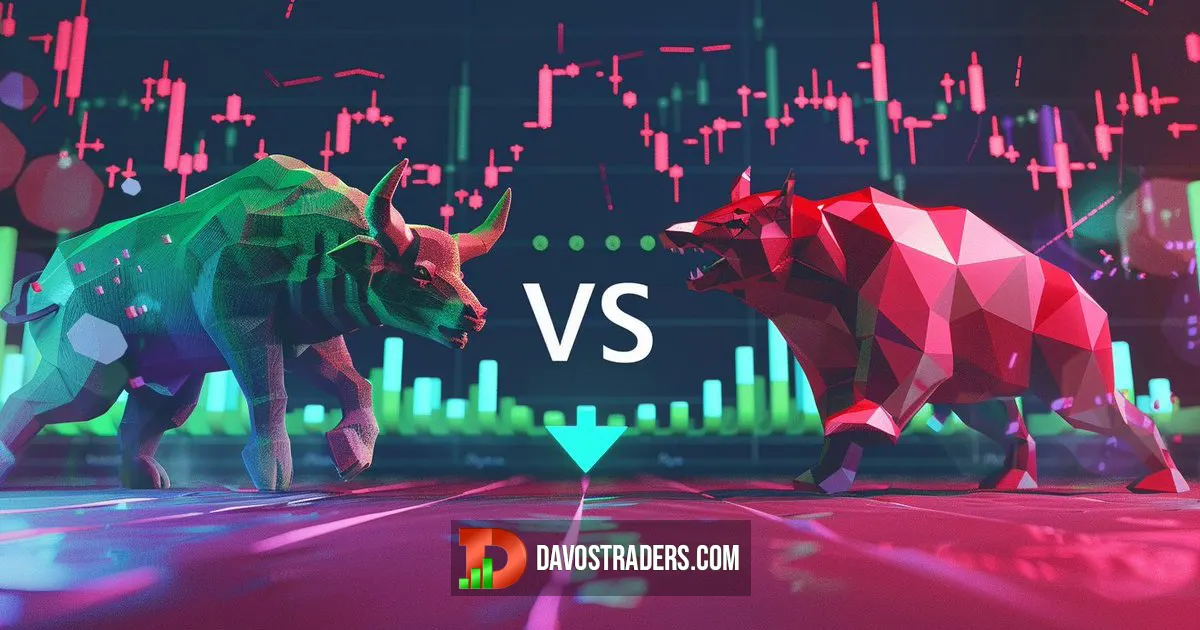How to Identify Bull vs Bear Markets in Crypto (Even as a Beginner)

The crypto market moves in cycles — sometimes we see prices soaring, other times they crash hard. These are known as bull and bear markets.
If you’re new to trading, learning how to recognize which phase the market is in can help you avoid bad decisions and improve your timing.
In this beginner-friendly guide, we’ll walk you through how to spot bull and bear markets using simple tools and logic — no technical jargon required.
🐂 What Is a Bull Market in Crypto?
A bull market refers to a period when prices are rising steadily, confidence is high, and investors are optimistic. It's often marked by:
- Consistent higher highs and higher lows
- Strong trading volumes
- Positive news and hype on social media
- Increased interest from retail and institutional investors
During bull markets, people tend to FOMO (fear of missing out) into coins, which fuels the uptrend even more. These phases can last months or even years, and they often lead to massive gains — especially for early participants.
🐻 What Is a Bear Market in Crypto?
A bear market is the opposite. Prices fall, sometimes sharply. Fear takes over, trading volume drops, and many projects go quiet.
Signs of a bear market include:
- Lower highs and lower lows
- Negative sentiment across news and Twitter
- Long periods of sideways or declining prices
- People panic-selling or quitting crypto entirely
Bear markets often clean up the noise and hype, leaving only strong projects standing. They’re tough, but they also offer the best accumulation opportunities — if you know how to spot them.
🔄 How to Spot a Market Shift: Bull to Bear (and Vice Versa)
Markets don’t flip overnight — they shift gradually. Some clues that a bull is turning into a bear include:
- Price starts struggling to break previous highs
- Major coins lose momentum while altcoins dump
- Sudden negative news sparks strong sell-offs
- Sentiment shifts from greedy to fearful
On the flip side, signs that a bear is ending and a bull is starting include:
- Bitcoin stabilizes and starts forming higher lows
- Volume increases slowly on green days
- More interest from influencers and crypto media
- Breakout of key resistance levels after long consolidation
📊 Key Indicators That Help Identify Market Trends
You don’t need fancy tools — just a few simple indicators can help:
- Trend lines: Drawn on charts to see the general direction (check our guide on How to Leverage Technical Analysis for Better Crypto Trading Decisions for more details).
- Moving averages (like the 50-day and 200-day): If price is above them, market is likely bullish.
- Volume: Increasing volume during upward moves = stronger trend.
- Fear & Greed Index: Helps measure market emotions. Fear = potential bottom, Greed = potential top (read our article Top 5 Risk Management Rules Every Crypto Trader Must Follow for tips on staying disciplined).
Even if you're not a technical analyst, watching these basics can give you a huge edge.
🚨 Why It Matters for Your Trading Strategy
If you know you're in a bull market, you can be more aggressive — buying dips and holding longer.
In a bear market, protecting capital and focusing on short-term trades or stablecoins becomes more important.
Understanding the market cycle helps you avoid chasing tops or panic-selling bottoms — two of the most common mistakes beginners make (learn how to avoid these in the article 5 Common Trading Mistakes and How to Avoid Them in 2025).
📝 Final Thoughts
Recognizing bull and bear markets doesn’t require complex tools — just a bit of awareness and consistency. The more time you spend watching price action and understanding cycles, the better your instincts will become.
If you want help navigating the market with more confidence, check out our VIP crypto trading signals. We monitor market conditions daily and share clear entries, exits, and insights.
👉 Join our free Telegram channel @davostraders and level up your trading strategy today.
